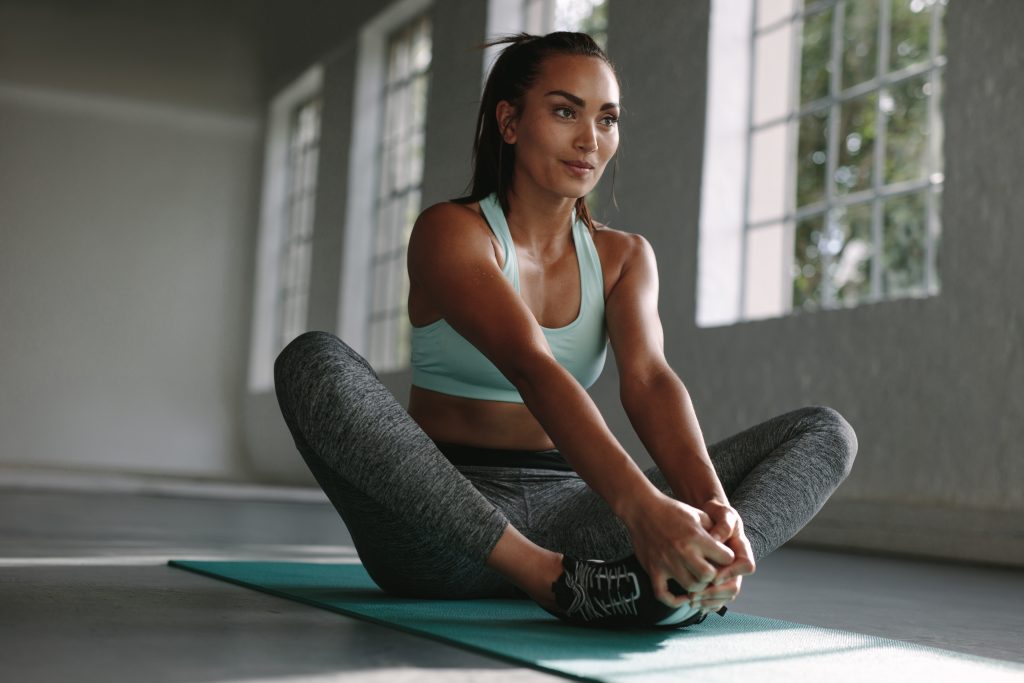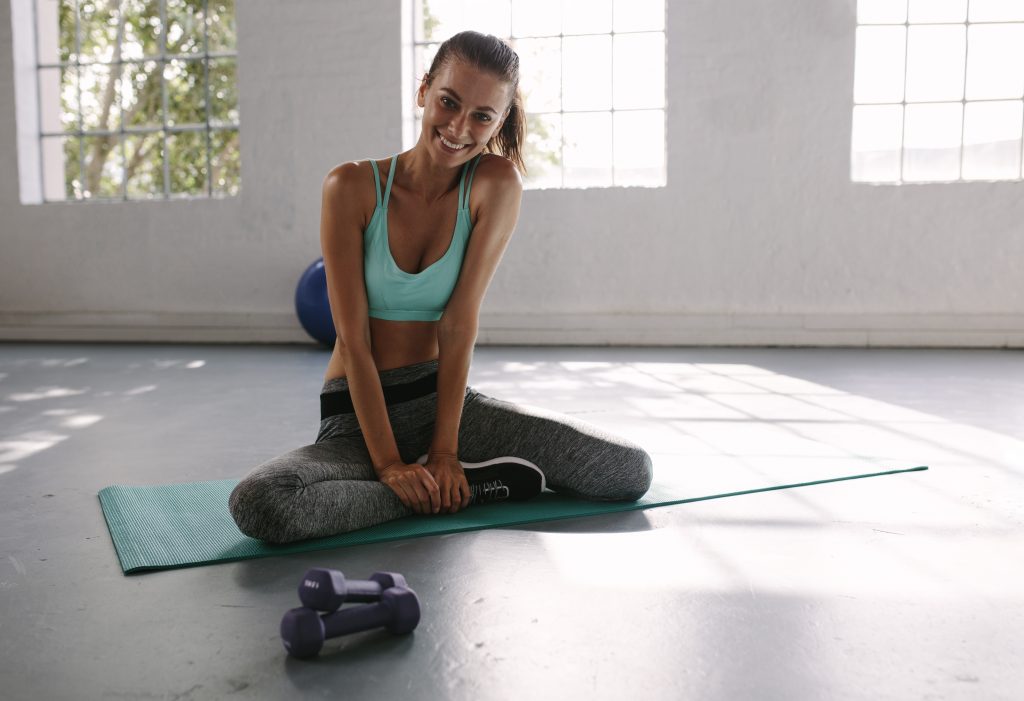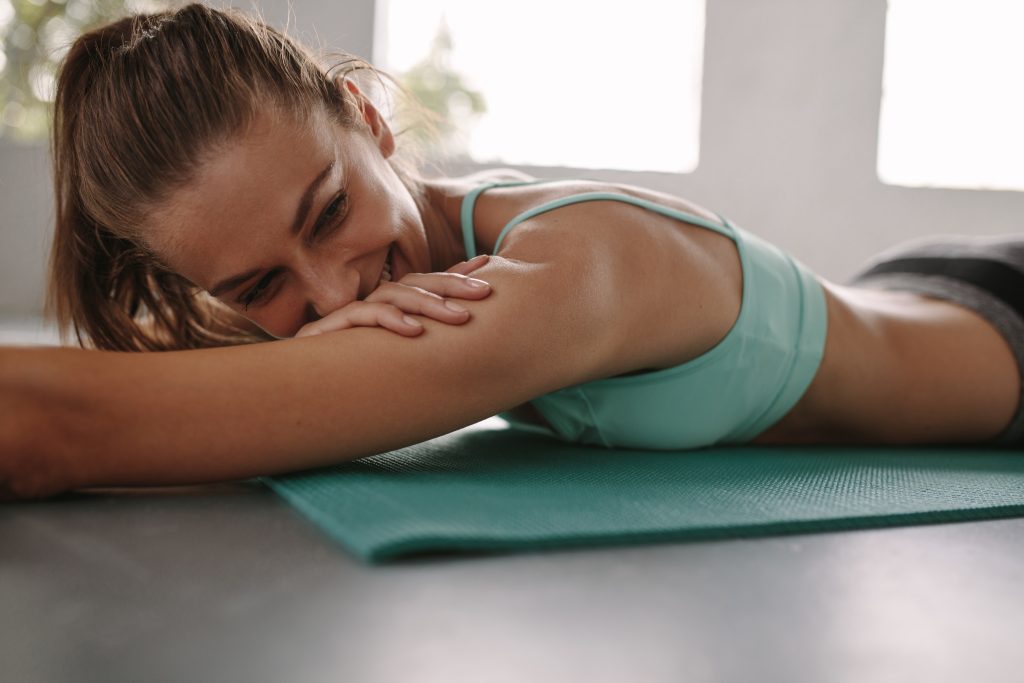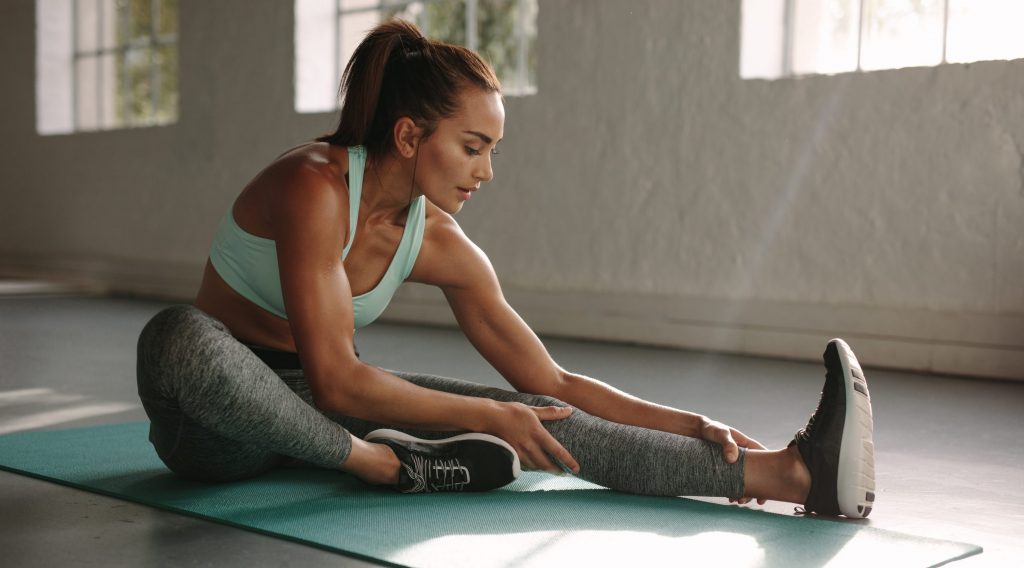Overview
If you want to know how stretching can help increase strength, you have come to the right place!
Have you seen that guy, stacked with muscle who bench presses 200kg but strapped from head to toe in Rocktape? If you haven’t, trust me, he exists in most gyms! And the reason for the Rocktape, are countless injuries that chances are, could have been avoided by stretching!
The hard truth is that if you train without stretching, you will inevitably become injured, which leads to weakness.
Stretching can help increase strength through various means, I’ll explain:
What is flexibility?
Flexibility refers to the range of motion of a joint or group of joints and the degree of extensibility of the tissues that support the joint(s). We are all flexible to some extent, but through stretching, we should all aim to achieve an increased level of flexibility.
What is stretching?
To get to grips with what stretching a muscle means and how stretching can help increase strength, we must first understand the basics of how a muscle works, and what a muscle contraction is.
Muscles are made up of strands, known as fascicles. The fascicles are what cause the striated effect on conditioned athletes and what creates the jaw-dropping muscle definition seen on bodybuilders.
The fascicle is made up of bundles of muscle fibres that are bound together by connective tissue known as perimysium.
The muscle fibres are then made up of threads known as myofibril. The myofibril is made up of two types of protein filaments, thick and thin. These filaments overlap and slide across each other, and shorten during a muscle contraction.
We need to know that a muscle shortening occurs in which not all, but the majority of instances during a muscle contraction. The muscle contraction causes these filaments to slide across each other and overlap.
“During a stretch, muscles lengthen in the opposite plane to the contraction, and the number of overlapping filaments decrease, thus realigning the muscle fibres at the most microscopic levels.”

The benefits of stretching
A supple lengthened muscle has a far better blood flow than a tight one, which supports greater nutrient and oxygen supply to muscle tissue to aid performance during a workout, and then with ‘post workout’ recovery.
The results of a well-structured stretch routine are; having more energy, an improved mood, enhanced athletic performance including increased strength, increased range of motion, personal bests (PB’s) and minimum to no injuries.
What is ‘range of motion’ (ROM)?
ROM refers to the measure of the movement of, and within a joint. Having a good range of motion (ROM) can help improve athletic performance and reduce the potential of injury occurrence.
The measurement of ROM can be dependent on the joint type, muscles, tendons and ligaments. Joints that have a greater range of motion and can move to their full potential will be stronger than those that don’t; by improving your joint flexibility, you will maximise ROM.
Stretching can help increase strength through increased ROM!
“Stretching can help increase strength through ROM! The greater the ROM, the greater the number of muscle fibres recruited during resistance training. Targetting more muscle fibres translates to a greater release of HGH and Testosterone for up to 24 hours after you finish exercising.”
Both men and women produce testosterone and HGH, albeit men produce around seven times more testosterone than women, and women produce approximately five times more HGH than men.
Testosterone is responsible for enhancing sexual characteristics, such as muscular definition, as well as increasing metabolic functions. Testosterone is produced in the testes in men and ovaries in women but also produced in the adrenal glands in both sexes.
HGH is responsible for the growth of all tissues, cell reproduction and just like testosterone, metabolic processes.
The significant difference therefore between both hormones is while testosterone favours muscle growth, HGH enhances full body growth (inclusive of all tissues). HGH can also be more effective at metabolising fat.

What Types of Stretching Can Help Increase Strength and Athletic Performance
All types of stretching can help increase strength and athletic performance and long as they are applied correctly. This means using all of the various types of stretches at the correct times during your training.
There are seven major stretch types:
1. Isometric Stretching:
Holding a static stretch with the stretched muscle under tension, usually against an immovable object. An example of an isometric chest stretch would be placing your elbow and forearm against a wall, fingers pointing upward, then leaning into the shoulder while tensing the pectoral (chest) muscles.
– When to use this stretch:
At the end of your workout while the muscles are still warm, usually within 5-15 minutes of you finishing working out that muscle group.
– How long should you hold this stretch:
30 seconds for maintenance, and up to 60 seconds for developmental, I.e. increasing flexibility.
2. Dynamic Stretching:
This method of stretch replicates the more advanced movement to come, such as the main workout, only it is performed at a lower level of effort or weight, to warm the muscles and therefore improve their performance while reducing the risk of injury. An example of a dynamic stretch would be performing press-ups before the chest press.
– When to use this stretch:
This type of stretch is typically carried out during a warm-up and requires movement of the muscles about to be worked in a controlled manner, mimicking the main body workout.
– How long should you hold this stretch:
This stretch requires movement to mimic the main body workout. Movements should, therefore, simulate the main body workout and last for between 5 to 10 minutes.
3. Ballistic Stretching:
Ballistic stretching uses fast, bouncing movements to stretch muscles past their normal range of motion. The ballistic stretch can improve the elasticity of tendons. The ballistic stretch can be used post ‘dynamic stretching’ to increase the range of motion even further. Squat jumps would be an example of ballistic stretching in preparation for the high jump.
– When to use this stretch:
A conditioned athlete should perform this stretch when wanting to increase their range of motion. The ballistic stretch should take place after a dynamic warm-up and even perhaps the main body workout, the point being; muscles should be completely warmed up before performing the ballistic stretch to help avoid injury.
The simultaneous and fast movement that is ‘stretch, then contraction’ can reduce tendon stiffness and potential injuries for sports that include any form of jumping.
– How long should you hold this stretch:
2-3 sets of 10-20 bounces, with 10-15 seconds rest between sets per muscle group.
4. Static Stretching:
To perform the static stretch, you should lengthen a muscle to a challenging position, and hold it. This stretch helps avoid injury by making a muscle more pliable and less prone to injury.
Muscles contract during exercise and become tight; static stretching relieves this symptom, helping reduce the effect of ‘delayed onset of muscular soreness’ (DOMS).
– When to use this stretch:
At the end of your workout while the muscles are still warm, usually within 5-15 minutes of working out.
– How long should you hold this stretch:
30 seconds for maintenance, and up to 60 seconds for developmental, I.e. increasing flexibility.
5. Static Active Stretching:
During the static active stretch, you should contract the opposing muscle to the muscle you are trying to stretch. An example would be contracting the Tibialis Anterior muscle found at the front of your lower leg. This movement will force the heel down lengthening and so stretching the calves muscles.
– When to use this stretch:
At the end of your workout, while the muscles are still warm, usually within 5-15 minutes between working out the muscle group, you’re about to stretch.
– How long should you hold this stretch:
30 seconds for maintenance, and up to 60 seconds for developmental, I.e. increasing flexibility.
6. Static Passive Stretching:
Static passive stretching requires no muscle contraction and uses an external force to increase the range of motion, such as using a partner. An example would be performing the splits in the seated position to stretch the adductor muscles and asking a partner who is sat in front of you to push your feet outwards with their feet gently.
– When to use this stretch:
Post workout during the cool-down phase, ideally within 5 – 15 minutes of the workout.
– How long should you hold this stretch:
30 seconds for maintenance, and up to 60 seconds for developmental, I.e. increasing flexibility.
7. PNF (Proprioceptive Neuromuscular Facilitation) Stretching:
PNF is a passive and isometric stretch where you will contract a muscle while it lengthened under tension, and then passively stretch that muscle through the newly increased range of motion (ROM).
– When to use this stretch:
During muscular rehabilitation or mid-workout.
– How long should you hold this stretch:
The partner will passively adjust your muscle to the stretched position (under tension) where you will then contract the muscle for 5-10 seconds. The contracted muscle is then passively stretched to the new increased range of motion for 30 seconds. Repeat this process 3-4 times.

You should always warm up to avoid injury!
Warm-ups are a tricky business because there can be so many movements. Trying to convince people of the benefits of warming up, and how to warm up before they become injured can be difficult when all they want to do is a workout.
Knowledge is key, and if we can all understand that stretching can help increase strength, more people would stretch.
“The warm-up warms the muscles, lubricates the joints and raises the heart rate in preparation for an upcoming workout, to help aid performance and prevent injury.”
You’ll find that although some people understand the benefits of stretching, they will still choose not to warm up. Others, who may not know the benefits will warm up, perhaps due to environmental factors, because that’s what most of us have always done from a very early age.

How does Shredify help?
Shredify understands that stretching can help increase strength, athletic performance and injury avoidance. Therefore, stretching is prescribed for each muscle group before the main workout.
Shredify prescribes;
For weighted exercises:
The number of sets will depend on your body shape goal, and it will be at a lighter weight, (around 40% of your max lift weight) to prepare you for the main workout of that muscle group.
Once a muscle group is warm, you’ll move straight onto the heavier lift phase.
For bodyweight exercises:
Shredify takes its body weight training seriously and provides callisthenics, gymnastics and street workout exercises.
Bodyweight training uses dynamic stretches as a warmup. Once a muscle group is warm and worked, Shredify prescribes no more dynamic stretches.
Stretching Can Help Increase Strength Using Time Under Tension Training
Many dispute the positive benefits of time under tension training (TUT) for strength development. The dispute, however, often comes with little scientific evidence to back up their rebuttal.
Metabolic stress stimulates muscle growth, and greater gains can develop through an increased range of motion. This extra muscle growth is due to the recruitment of extra fibres within a muscle.
To help develop strength, we can change the tempo of the eccentric and concentric phases of each lift. An example is the 3–1– 1-second ratio for strength, and 5-1-5 second ratio for hypertrophy (building muscle mass).
By prolonging the eccentric phase of any lift, you are passively stretching the muscle, under tension. Essentially you are increasing strength by lengthening the muscle using resistance.
The ‘3’ second phase should apply during the eccentric phase.
Let’s refer to the ‘lat pulldown’ which works the upper back: To gain strength, first, we would make the eccentric phase, which is the pulling of the bar to the chest last three seconds. We would then pause for one second with the bar held against the chest, before returning the bar to the start position with arms extended. For the squat, the ‘3’ second phase would again be during the eccentric phase, which is on the way down.
Stretching Can Help Increase Strength by Working the Stretch Reflex (Myotatic Reflex)
Have you ever heard the phrase ‘bouncing on the muscles’ to help increase the frequency of explosive reps? Well, the stretch reflex refers a muscle contraction immediately after a stretch.
It is a protective mechanism inbuilt within each of us to stop a muscle completely tearing or snapping. For example; if you rolled your wrist, you wouldn’t snap your flexor and extensor muscles in your forearms, as instead, your muscles would contract rapidly to stop this from happening.
The neuromuscular junction (NMJ) controls the stretch reflex. The NMJ is where motor neurons within muscles communicate with the muscle fibres thus creating movement.
Stretching can help increase strength by working the stretch reflex. The contractive phase of a rep, the PNF stretch and the active-passive stretch are all times that tension can be applied and loaded to the muscle spindles.
By increasing the frequency of load under tension, you create a greater and more powerful muscle contraction and achieve more significant strength gains.
So, why do we stretch?
To summarise; stretching can help increase strength and should be part of any training plan, to avoid injury, and improve athletic performance. When carried out correctly, stretching can also increase explosive muscular power and endurance.
Most of what this blog covers will apply to various aspects of all training plans; so be sure to stretch smart using correct technique, and proper application. This strategy will maximise your training results and ensure you end up in the winner’s enclosure!
